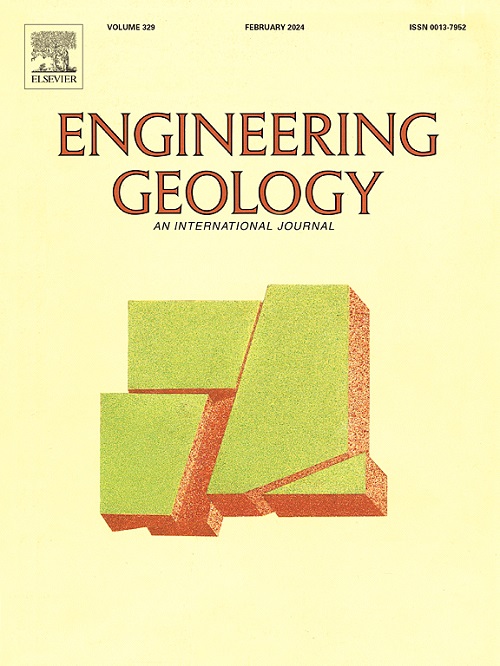Pull-out capacity and failure mechanism of suction anchors in clay considering trench configuration and local scour effects
IF 6.9
1区 工程技术
Q1 ENGINEERING, GEOLOGICAL
引用次数: 0
Abstract
Seabed trenching is a common geological and geotechnical hazard encountered in offshore engineering, potentially compromising the pull-out capacity of suction anchors and posing risks to mooring systems over time. Currently, to ensure conservative design and facilitate modelling convenience, many relevant studies simplify the trench configurations compared to their in-situ conditions which may lead to inaccurate estimation of trench influence. Moreover, the combined effect of trench and local scour is rarely addressed. Therefore, this paper aims to investigate the impact of various trench transversal and longitudinal geometric configurations on undrained pull-out capacity and failure mechanisms of suction anchors in clay considering local scour phenomena. Two distinct downward trends in the pull-out capacity for trench width expansion and trench depth extension are revealed. Comparisons between simplified and realistic trench configurations are conducted and it is recommended to model the realistic trench configurations for accurate estimation of capacity loss. Scenarios involving simultaneous trenches and local scours result in a more significant reduction in pull-out capacity compared to individual trenches. Based on the analyses results, a systematic calculation framework is proposed to estimate the pull-out capacity during trench development. Furthermore, two design considerations are examined with the conclusions that relocating padeye depth towards shallower positions to reduce trench depth cannot achieve higher capacity and selecting suction anchors with larger aspect ratios should be preferred choices considering material cost. These findings can assist in estimating capacity loss and optimizing anchor design when encountering trench-related issues in engineering practice.
求助全文
约1分钟内获得全文
求助全文
来源期刊

Engineering Geology
地学-地球科学综合
CiteScore
13.70
自引率
12.20%
发文量
327
审稿时长
5.6 months
期刊介绍:
Engineering Geology, an international interdisciplinary journal, serves as a bridge between earth sciences and engineering, focusing on geological and geotechnical engineering. It welcomes studies with relevance to engineering, environmental concerns, and safety, catering to engineering geologists with backgrounds in geology or civil/mining engineering. Topics include applied geomorphology, structural geology, geophysics, geochemistry, environmental geology, hydrogeology, land use planning, natural hazards, remote sensing, soil and rock mechanics, and applied geotechnical engineering. The journal provides a platform for research at the intersection of geology and engineering disciplines.
 求助内容:
求助内容: 应助结果提醒方式:
应助结果提醒方式:


